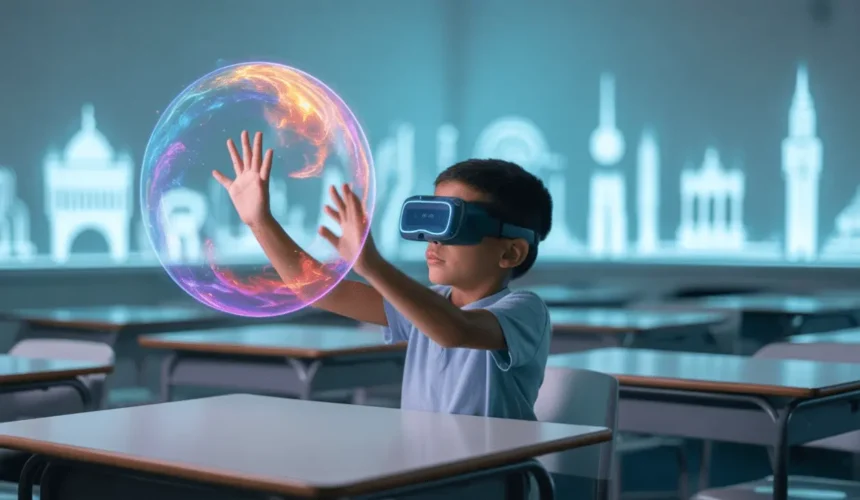Technology is no longer just a tool; it has become a medium for storytelling, entertainment, and human connection. In this evolving digital landscape, a new concept has begun to capture attention spaietacle. More than just a buzzword, spaietacle combines immersive technologies with creativity, offering futuristic experiences that go beyond traditional boundaries. By blending AR, VR, and AI, spaietacle represents the next step in how we interact with technology.
What is Spaietacle in Technology?
At its heart, spaietacle is the fusion of advanced technology and human imagination. Unlike traditional entertainment, where people simply consume content, spaietacle places participants inside the experience. It creates interactive, immersive environments powered by tools like augmented reality, virtual reality, projection mapping, and artificial intelligence.
This shift marks a new era where the audience is no longer a passive observer but an active participant in the digital world.
The Role of AR and VR in Spaietacle
Augmented reality (AR) and virtual reality (VR) form the foundation of spaietacle. AR enhances real-world environments with digital overlays, while VR transports users to entirely virtual worlds. When combined, these technologies create unforgettable experiences that feel both real and futuristic.
Imagine stepping into a museum where ancient history comes alive through AR, or entering a VR simulation where you explore distant galaxies. Spaietacle makes these scenarios possible, pushing the boundaries of what entertainment and education can be.
Artificial Intelligence and Personalization
While AR and VR provide immersion, artificial intelligence (AI) brings personalization to spaietacle. AI algorithms can track user behavior, adapt storylines, and adjust environments in real time. This means no two experiences are the same—each participant receives a customized journey shaped by their actions and preferences.
For example, an AI-driven spaietacle exhibition could alter visuals or music depending on the user’s choices, creating a unique and memorable interaction every time. This personalized approach strengthens emotional impact and keeps participants engaged.
Applications of Spaietacle in the Tech Industry
The scope of spaietacle extends far beyond entertainment. Within the tech industry, its potential applications are vast:
- Education: Students can walk through virtual ecosystems, explore planets, or study history in interactive digital environments.
- Healthcare: Doctors can practice complex surgeries in VR-based simulations, reducing risk and improving accuracy.
- Corporate Training: Businesses can use spaietacle to train employees with immersive simulations that prepare them for real-world challenges.
These applications highlight how spaietacle is not just about fun but also about creating practical, impactful solutions across industries.
Cultural and Social Impact
Beyond business and education, spaietacle also influences culture and society. By combining technology with storytelling, it can preserve heritage and traditions in innovative ways. Imagine attending a cultural festival where AR and VR bring myths and folklore to life, or exploring historical events through interactive 3D projections.
This ability to merge the past with the future ensures that Digital Spectacle resonates across generations while strengthening community bonds.
The Future of Digital Entertainment
The future of entertainment is inseparable from spaietacle. As digital platforms, streaming services, and gaming industries experiment with immersive technologies, Digital Spectacle takes things further by unifying them into one powerful experience.
With the rollout of 5G, more powerful processors, and next-generation headsets, the reach of Digital Spectacle will continue to expand. Soon, the line between reality and virtuality will blur, making entertainment more dynamic, interactive, and meaningful.
Challenges and Opportunities
Like all emerging technologies, spaietacle faces challenges. High costs of VR/AR equipment, limited accessibility, and infrastructure requirements are significant barriers. However, these challenges also create opportunities.
Tech companies are working on cloud-based solutions, affordable devices, and eco-friendly approaches to make Digital Spectacle widely available. As innovation continues, accessibility will improve, allowing communities worldwide to benefit from immersive digital experiences.
Conclusion
In conclusion, spaietacle is more than a concept—it is the future of immersive technology. By merging AR, VR, AI, and digital creativity, it delivers experiences that redefine how we learn, connect, and entertain ourselves. From classrooms to hospitals, from corporate spaces to cultural festivals, Digital Spectacle is unlocking possibilities once thought impossible.
As technology evolves, spaietacle will become an essential part of human experience, shaping the way we interact with both the physical and digital worlds. The real question is not whether Digital Spectacle will succeed, but how fast it will transform our lives.







